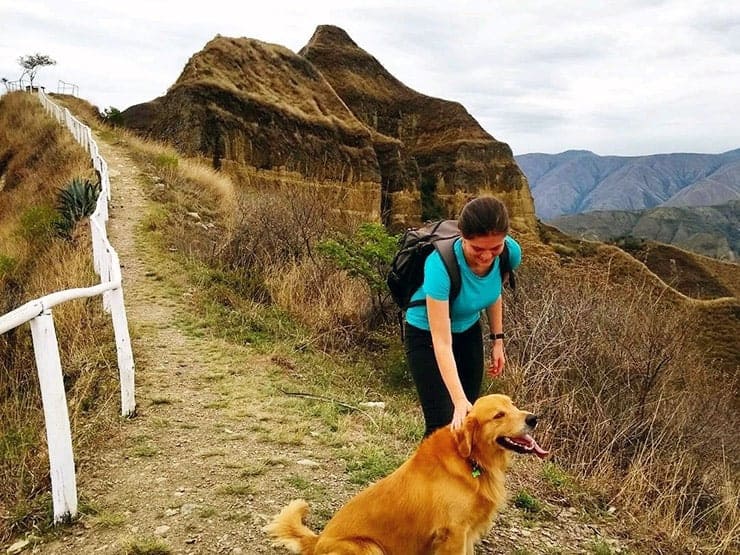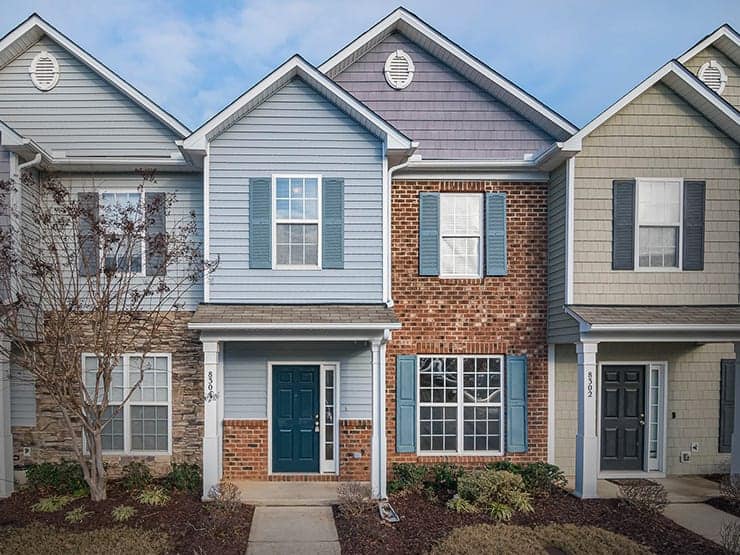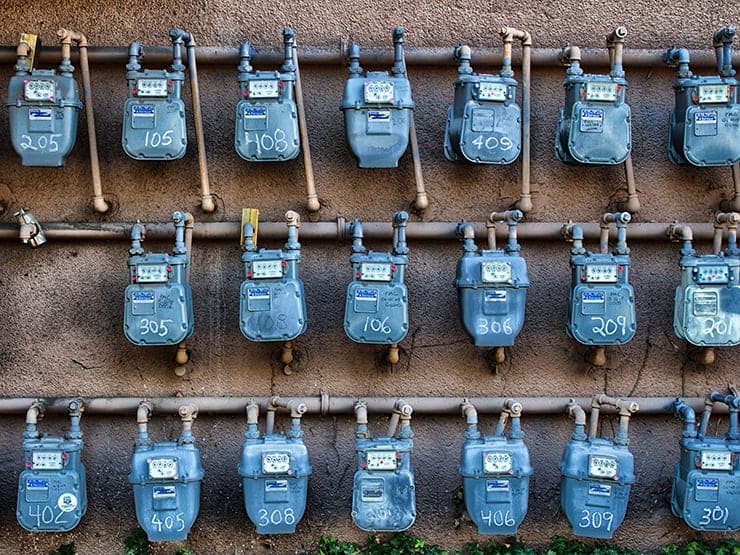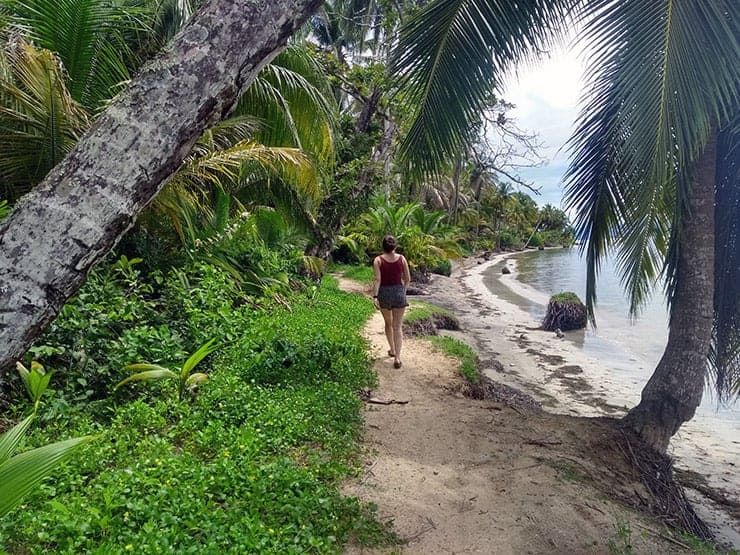Photo credit: Gabriel Guita on Pexels
How Much Does it Cost to Live the FIRE Life near Amsterdam?
Hello, and welcome to interview #10 in the How Much Does it Cost to Live the FIRE Life interview series! Part interview, part spending report, this series will introduce us to FIRE* seekers from all over the world.
They’ll reveal their essential spending and money-saving tips—all to help us learn new ways to save on our own expenses. As a bonus, we’ll also get to discover the unique advantages and challenges of living in different places around the globe.
*FIRE stands for financial independence, retire early. It’s also known as FI—financial independence. For more info, see my FI School series—it’ll teach you everything you need to know about FI (and FIRE).
About the interview series
I created an intro page for this interview series to help explain what it’s about, what’s included (or not) and why. I’ll also link to all the interviews from the intro page—so check back there to see the entire collection.
Jump to the series intro: How Much Does it Cost to Live the FIRE Life? (The Interview Series)
Disclosure: These interviews may include affiliate links. That means I’ll receive a commission if you make a purchase through my links—at no extra cost to you. Thank you!
Interview #10: Marjolein from near Amsterdam
In today’s interview, we’ll meet Marjolein from the Radical FIRE blog. She lives the FIRE life with her partner near Amsterdam in the Netherlands. (I’m so jealous—that’s a destination that’s long been on my bucket list!)
Marjolein and I started our blogs around the same time (December 2018 for her and January 2019 for me). It’s been so nice to share info and tips as we grow our blogs together. Thanks, Marjolein!
At Radical FIRE, Marjolein writes about a wide range of money-related topics including: saving and making money, FIRE, travel, and more. For those who live in Europe, you’ll appreciate her European-specific info (e.g. the bank accounts, apps and investment platforms she uses).
I hope you enjoy getting to know Marjolein and learning just how frugal she is! I’ll be back at the end of the interview with further thoughts on her incredibly low spending—but for now, let’s dive into the interview…
Note: While Marjolein lives with her partner, her interview is categorized for a single person. That’s because the expenses in her interview are for her portion only.
Table of Contents
Part 1
Part 2
Part 3
Part 4
Part 1: Getting to know you

Tell us about you and your partner
I am a 26-year-old living near Amsterdam in the Netherlands, Europe. I am a financial controller between 9 and 5 and work on my personal finance blog all other hours of the day. It’s safe to say I am obsessed with personal finance and love running the blog.
Besides my finance hobby, I enjoy being outside, hiking, spending time with friends, and I look very much forward to traveling again.
I live together with my partner, who is 30 years old and works in HR. We share all living expenses equally, and we don’t have any joint accounts at this moment. All the numbers below will be for just me.
If you want to learn more about me, check out my about me page!
Where are you in your journey to FIRE?
My journey to FIRE started about 2.5 years ago, at the end of 2019. It was after a week of long hours and hard work, when I typed into Google: ‘how to retire early’ and I actually found useful information.
I crunched my numbers, and I found out that I could be financially free in 10 years if I adjusted my current habits.
The name Radical FIRE says it all, as I can be very radical in the things I do. I completely turned around my financial habits, and I saved over 75% of my income in 2020. Yes, I know that it’s pre-pandemic, and I saved 68% of my income in 2019 while traveling for 4 months with no salary.
I post monthly in my monthly reports about how far I am in my FIRE journey. At this moment, I’ve reached 28% to FIRE. My goal is to get to FIRE before I’m 32, so 6 more years. While I’m typing this, I hope I achieve it sooner!
I’m currently trying to up my monthly income, to invest more money monthly, and to accelerate the journey to financial independence. I am specifically focused on building high-income skills, freelance writing, growing the blog, and flipping things for profit.
What type of FIRE are you aiming for? (FIRE, Lean FIRE, or Fat FIRE*)
How Chrissy defines FIRE, Lean FIRE, and Fat FIRE
Some people define Lean FIRE as under $40k in annual spending; FIRE as $40–$100k in annual spending; and Fat FIRE as $100k+ in annual spending.
However, I prefer looser definitions that are not based on hard numbers. That’s because $100k could be Fat FIRE in a small Canadian town but Lean FIRE in San Francisco. That said, here are my definitions:
- Lean FIRE: The essentials with little or no discretionary spending.
- FIRE: The essentials plus a comfortable amount of discretionary spending.
- Fat FIRE: The essentials plus a luxurious amount of discretionary spending.
Over the years, I’ve become quite a minimalist person. I live the minimalist lifestyle after a couple of rounds of very serious decluttering. Remember the time where Marie Kondo was a big trend? Yeah, around that time.
I have to admit, moving four times in two years got me motivated to get rid of as much stuff as possible. When you’re moving and haven’t touched a part of your things after a year, you know you can probably live without it.
The minimalist tendencies also translate to FIRE. I don’t need to have much to be happy or experience freedom.
I can live off €1,000 a month comfortably at this point of my life, which is around $1,200 USD or $1,500 CAD.
I know this may raise some questions with people, as it’s very low. I’ve lived off €685 per month in 2019 and €720 per month in 2020, so I know it’s possible for me.
My #1 priority is to quit my job and do something I want for myself. With that said, lean FIRE would be the perfect fit for me.
I want to cover my minimal expenses, travel the world, read tons of books, and work on the blog when I feel like it. That’s the dream.
Tell us about your living situation
I live together with my partner in a two-bedroom apartment of about 65 square meters or 700 square feet. We rent the apartment and couldn’t be happier with it.
We live a 5-minute walk from the center, the train station, and the supermarket. Everything else we can do by bike. Conveniently, everything is so close together here.
Our living situation is unique in that my partner has lived in this apartment for 8 years, while house prices have increased dramatically. Because he rented all that time, we are lucky to pay rent below the current market price.
Why did you choose to live near Amsterdam?
I moved in with my partner over a year ago when we returned from our four-month trip to Central America together. He already had the apartment and had a friend live there while we were traveling. We came back and moved back in.
My partner grew up here, and he had lived in this apartment for about 8 years before I moved in. I am originally from the south of the Netherlands, and I studied in the east of the country, so I’m not bound to a specific region. My friends and family live all over the country.
Looking back, it was the perfect place to move in together because a lot of friends and family live around here. With the pandemic, it’s easier to take the bike and visit a friend instead of having to go by public transport.
Part 2: The expenses
In this section, Marjolein shares her essential expenses and best money-saving tips. But before we get started, let’s review some important notes:
Important notes about the numbers
- Only essential expenses are included.
- Discretionary expenses (e.g. travel, gifts, etc.) are not included.
- Expenses are rounded to the nearest dollar.
- Expenses are displayed in the interviewee’s home currency.
- In this interview, the home currency is Euros.
- For your convenience, I’ve included a currency converter for each expense.
For detailed explanations about which expenses are included (or not) see my How Much Does it Cost to Live the FIRE Life intro post.
1. How much does housing cost near Amsterdam?

Rent (€350/month; €4,200/year)
The rent of our place is relatively low and increases every year by around €50. Because my partner lives in this apartment for over 8 years now, he has locked in very low rent.
It’s the perfect place for now, and we’re fortunate to have it. We live close to friends and family, have the flexibility of renting, and don’t overpay.
Property tax (€0)
Not applicable as we rent.
Strata/HOA fees (€0)
Service fees of our apartment building are included in the rent.
Home insurance (€0)
We don’t have home insurance. All the items in our apartment are secondhand or thrifted, so we don’t see the need.
Home maintenance (€0)
This category includes: home maintenance, repairs, cleaning, and improvements; household goods and supplies; furniture; and appliances.
We didn’t purchase anything for our home in the last year, or ever. We use what we have and are happy the way things are now.
Since we rent, there’s no cost for maintenance and repairs. We just call the company when something is up, and they send someone to fix it. I love that I don’t have to deal with that.
2. How much does transportation cost near Amsterdam?

Vehicle insurance (€0)
At this time, we don’t own a car. We do everything by bike, typical Dutch. We bike to work, we bike to the supermarket, we bike to friends, and we bike for fun. All other things are done by public transport.
Gas (€0)
No monthly gas costs.
Vehicle maintenance (€0)
No vehicle maintenance.
Bike maintenance (€5/month; €60/year)
Since we bike quite a lot, there is some bike maintenance involved. The basics like patching a tire we can do ourselves (but often don’t feel like it). The bike is my primary way of transport, and I love biking around.
Parking and tolls (€0)
No parking or tolls as we don’t own a car.
Transit (€30/month; €360/year)
I take public transport to friends and family. Now with the pandemic that is brought back to zero, so my average spending for the last couple of years is shown here.
Train transit is straightforward in the Netherlands, but it’s relatively expensive. Every time I visit my family in the south, I’ll travel around 2 hours one way and pay about €40 for a round trip.
3. How much does food cost near Amsterdam?

Groceries (€80/month; €960/year)
As we don’t go out to eat too regularly, we focus on buying food that we enjoy eating. At the same time, we spot deals and manage to get our grocery budget reasonably low.
Managing your grocery budget is one of the best money-saving tips, as it’s quite a big part of your monthly spending for most.
When I lived on my own, I would spend €70 per month on groceries. With living together and not going out at all, we spend a little more on groceries while still having low costs.
Here’s precisely how we keep our grocery spending low:
- Keep an inventory of what we have, so nothing goes to waste
- Meal plan for the week. I cook three days of the week, and my partner cooks the other three days, so we think about what we want to make in advance and get the ingredients for that.
- Only do groceries once a week and get stuff from the store nearby when we need to. That way, we don’t get distracted and solely focus on things we need.
- NEVER shop hungry. Last month we went to get eggs, and we were both hungry. We returned with €40 worth of food, totally unnecessary.
- Go to a low-cost supermarket. We bike 15 minutes to the nearest Lidl, a low-cost supermarket, and get our groceries for the week.
- Buy in bulk when we can.
- Get the deals—but ONLY of things we would’ve eaten otherwise, or something we usually think is too expensive.
- Limit our consumption of meat and alcohol, which is relatively easy as I don’t really enjoy eating meat and only drink on the weekends if at all.
If you have a freezer on hand, use that as well. Frozen fruits and vegetables can be much cheaper than fresh ones, plus they last longer. We have a mini-freezer that only fits one loaf of bread, so this is not an option for us at this moment.
Related reading: How to Save Money on Groceries (36 Valuable Tips) and Detailed Flashfood Review (Groceries for 50-70% Off)
Eating out (€20/month; €240/year)
Eating out is something we do on special occasions or with friends. I’ve never gotten into the habit of eating out, and most of the time, I like the food at home just as much. Keeping this something special helps me to enjoy it when I do.
When I go out to eat, I mostly eat things I don’t prepare myself. I have a specific soft spot for sushi, which is mostly what I eat when I do go out to eat.
4. How much do utilities and bills cost near Amsterdam?

Natural gas (€0)
Our gas is included in the rent at this moment. When we use more than is anticipated, we have to pay extra. Of course, when we use less, we get an amount back.
Natural gas usage is mostly lower since we’ve lowered our thermostat by a couple of degrees, wash in cold water, and have short showers. Winters get pretty cold in the Netherlands, so we do heat up our house when people come over.
Electricity (€0)
Electricity is also included in the rent at this moment. In the spring and summer, our electricity usage is the lowest. The days are long since we have light until 11 pm.
The summers have gotten a lot hotter in recent years, but we didn’t buy an A/C just yet. That means our electricity use stays low during the summer, despite the higher temperatures.
We get a monthly report, where we often use half of what a one-person household would use. We’ve successfully cut our utility bill in half. We don’t watch TV, don’t have a dryer or dishwasher, and recently replaced all the lightbulbs for LED.
Water (€0)
We use minimal water; the amount we do use is included in rent. We only use water for drinking, showering, and washing the dishes.
Garbage and recycling (€26/month; €315/year)
We get charged a yearly waste handling fee, as we live in an apartment. The fee is based on how many people live in the household.
I do think we use their service below-average. We don’t buy any fruits or vegetables packed in plastic, and we always separate our plastic packages and bring them to the nearest recycling station. Of course, we also recycle our glass and paper separately, which means we have very little waste.
Internet (€0)
Our internet subscription is also included in the rent. We have the cheapest internet option, which also happens to be highspeed.
We use our internet for gaming, working, blogging, and video calling without any problems.
Home phone (€0)
We don’t have a home phone, as we only use our cell phones.
Cell phones (€2.50/month; €30/year)
I’ve always had a sim-only plan, where you only pay for the sim and buy the phone separately. I’ve had my current phone for over three years now, and it’s still doing what it’s supposed to do.
As I have wifi everywhere, I’ve chosen their lowest plan and keep my cell phone expenses at the bare minimum. I have wifi at work, at home, on public transport, and at the supermarket, so I don’t need much.
Streaming entertainment (€0)
We don’t use any streaming services. 🤯
5. How much do other essentials cost near Amsterdam?

Life and disability insurance (€0)
At this time, we don’t have any life insurance. In the Netherlands, you automatically have disability insurance when you are working.
Medical insurance (€109/month; €1,305/year)
The Netherlands has a universal health care system, where you are obliged to be insured, and you can pick how extensive you want your insurance to be. When you have more comprehensive insurance that covers more, you pay more.
Out-of-pocket medical expenses (€43/month; €511/year)
Everyone has a minimal out-of-pocket of €385 per year when you make medical expenses. It means that you have to pay for the first €385 of medical costs you make that year, and your insurer covers the rest. I didn’t use this the last couple of years.
Also, dental care isn’t covered by medical insurance when you’re over 18. Dental care can be quite expensive, so that’s where this budget is mostly going.
Clothing and footwear (€0)
I am currently on a clothing ban. At this point, I’m about 2.5 years in, and I don’t plan on stopping any time soon. I don’t expect to spend anything on clothing and footwear.
Personal care (€12/month; €144/year)
This category includes: haircuts, toiletries and grooming services and supplies.
Personal care includes supplements, vitamins, and shower stuff. Especially over the last year, I like to order these kinds of things all online in bulk. It’s convenient, saves money in the long run, and keeps me healthy in the process.
Technology (€0)
This category includes essential technology: software and hardware purchases, upgrades, maintenance, and repairs. Non-essentials (video games and consoles, e-readers, security cameras, etc.) aren’t included.
I don’t have any regular technology expenses and I didn’t have any expenses over the last couple of years. I have a phone that’s 3.5 years old, and it’s still working perfectly fine.
I have a laptop that I’ve bought over 3 years ago, and I expect it to function well for another couple of years. That’s about all technology I currently use, I don’t have any apps that I pay for currently.
Part 3: Adding it all up
Now that we’ve detailed all of Marjolein’s essential expenses, it’s time to add everything up in some nice, organized tables!
Important notes about the numbers
- Only essential expenses are included.
- Discretionary expenses (e.g. travel, gifts, etc.) are not included.
- Expenses are rounded to the nearest dollar.
- Expenses are displayed in the interviewee’s home currency.
- In this interview, the home currency is Euros.
- For your convenience, I’ve included a currency converter in each section. I hope you find it useful!
For detailed explanations about which expenses are included (or not) see my How Much Does it Cost to Live the FIRE Life intro post.
How much does it cost to live the FIRE life near Amsterdam?
1. Housing
| Expense | Monthly (EUR) | Annual (EUR) |
|---|---|---|
| Rent | €350 | €4,200 |
| Property tax | €0 | €0 |
| Strata/HOA fees | €0 | €0 |
| Home insurance | €0 | €0 |
| Maintenance | €0 | €0 |
| TOTAL | €350 | €4,200 |
2. Transportation
| Expense | Monthly (EUR) | Annual (EUR) |
|---|---|---|
| Vehicle insurance | €0 | €0 |
| Gas | €0 | €0 |
| Vehicle maintenance | €0 | €0 |
| Bike maintenance | €5 | €60 |
| Parking and tolls | €0 | €0 |
| Transit | €30 | €360 |
| TOTAL | €35 | €420 |
3. Food
| Expense | Monthly (EUR) | Annual (EUR) |
|---|---|---|
| Groceries | €80 | €960 |
| Eating out | €20 | €240 |
| TOTAL | €100 | €1,200 |
4. Utilities and bills
| Expense | Monthly (EUR) | Annual (EUR) |
|---|---|---|
| Natural gas | €0 | €0 |
| Electricity | €0 | €0 |
| Water | €0 | €0 |
| Garbage and recycling | €26 | €315 |
| Internet | €0 | €0 |
| Home phone | €0 | €0 |
| Cell phones | €2.50 | €30 |
| Streaming entertainment | €0 | €0 |
| TOTAL | €28.50 | €345 |
5. Other essentials
| Expense | Monthly (EUR) | Annual (EUR) |
|---|---|---|
| Life and disability insurance | €0 | €0 |
| Medical insurance | €109 | €1,305 |
| Out-of-pocket medical expenses | €43 | €511 |
| Clothing and footwear | €0 | €0 |
| Personal care | €12 | €144 |
| Technology | €0 | €0 |
| TOTAL | €163 | €1,960 |
Grand totals
| Expense | Monthly (EUR) | Annual (EUR) |
|---|---|---|
| Housing | €350 | €4,200 |
| Transportation | €35 | €420 |
| Food | €100 | €1,200 |
| Utilities and bills | €29 | €345 |
| Other essentials | €163 | €1,960 |
| TOTAL | €677 | €8,125 |
Part 4: Other expenses
This is a special section that’s just for fun! It’s the place for my interviewees to mention any expenses that they’ve done a really good job of optimizing and/or just want to share.
These expenses won’t be included in the totals (just to keep things as standardized as possible). I hope you find this section interesting and informative. Here’s one additional expense that Marjolein wanted to share:
Giving
I find it extremely important to give to others, whatever stadium of life I’m in. It’s important to be kind to others, do random acts of kindness, and give to others in any way you can.
In 2020, I spent €30 per month on giving, besides ordering food to support local businesses (and because their food is excellent and I was too lazy to cook). It may be a lot to some and very little to others.
The most important thing is that you have the feeling you’re giving back and share some of the wealth given to you every day.
It may look different for everyone. You may want to give directly to charities, you can volunteer, you can help a friend, or you can make someone’s quarantine birthday feel like an actual birthday. Whatever fits you at that moment. There are plenty of things to do with no money where you can help others at the same time.
TL;DR: be kind to others and share what you have when you can.
Travel
Another passion of mine is traveling. I traveled for four months to South America when I graduated from university in 2017. I traveled another four months to Central America with my partner in 2019.


I love the feeling of freedom I experience while traveling. Both times we traveled on a budget, ate the local food, got on the local bus transport, and flew on a budget by taking a low-cost airline home.
My next dream is to buy a campervan and slow-travel through Europe. The pandemic has shown me how beautiful the countries closer to home are and how we don’t need to travel to the other side of the world to enjoy ourselves.
Chrissy’s closing thoughts
Thanks again to Marjolein for sharing her expenses with us. She wins the award for lowest essential spending so far in this series!
That was not an easy number to surpass, given how extremely low previous interviewee, Fire Trekker’s spending was! (To be fair, their spending is very close, and could very well be the same, depending on the exchange rate.)
Looking through Marjolein’s spending, here are a couple of key takeaways to highlight:
The value of renting
Marjolein’s rent payment includes a crazy amount of value! Not only is it low to start with, but it also includes her heating, electricity, water and internet. It’s astounding that she gets so much for the €350/month ($515 CAD; $426 USD) that she pays for her portion of the rent.
As a homeowner, I always envy renters who are able to optimize their housing costs as much as Marjolein has. Not only does she pay very little for her housing, but she also doesn’t need to worry about all the hassles of home ownership.
Additionally, Marjolein doesn’t have to factor in the opportunity cost of having a large portion of her wealth tied up in home equity. By renting, she’s able to save and invest more of her money and get it working for her earlier in life.
The financial freedom of going car-free
For most of us, purchasing, owning, and driving cars costs us hundreds of thousands of dollars over our lifetimes. That’s a lot of money that could instead get us to FIRE much sooner.
By going car-free and biking everywhere, Marjolein saves bucket loads of money. Plus, there’s the added bonuses of more exercise and a drastically lowered carbon footprint. What’s not to love? To me, it seems like an idyllic way to live!
Optimize your Big Three expenses
If, like Marjolein, you’re able to cut your Big Three expenses (housing, transportation and food) reaching FIRE-level saving rates of 50% or more becomes much easier. (Marjolein regularly saves 75%+ of her monthly income!)
While it’s admittedly tough for most of us to match Marjolein’s very low spending, we can still learn from her and apply some of the same optimizations to our own lives. I hope her interview has inspired you to find ways to further optimize your expenses!
Connect with Marjolein
If you enjoyed Marjolein’s interview, you can find more of her content on her blog, Radical FIRE. You can also connect with her on Twitter, Facebook and Instagram.
Share your thoughts
Were you surprised by Marjolein’s essential expenses? Are any of them significantly different from where you live? Share your thoughts in the comments, along with your own money saving tips!
Steve and his wife are a Baby Boomer couple living in Southern Arkansas. They spend more than average (by FIRE standards) but it’s still far less than their Fat FIRE income provides!
Jesse lives in picturesque Rochester, New York and embraces what he calls ‘bimodal spending’ (which I LOVE)! Find out more about this and more in his interview.
Visit the intro page to learn more about the what and why behind the series and access the complete list of interviews.
Support this blog
If you liked this article and want more content like this, please support this blog by sharing it! Not only does it help spread the FIRE, but it lets me know what content you find most useful. (Which encourages me to write more of it!)
You can also support this blog by visiting my recommendations page and purchasing through the links. Note that not every link is an affiliate link—some are just favourite products and services that I want to share. 🙂
As always, however you show your support for this blog—THANK YOU!








16 Comments
Court @ Modern FImily
June 9, 2021 at 9:12 amGreat interview! And yet another reason why I want to move to Europe! That rental price is amazing and I loveeeee how the Dutch embrace the bike culture. And I’m super impressed with your food spend because being in Europe you’re likely eating fresh produce too from all the markets. Amazing. Marjolein, your country is beautiful 🙂 My favourite part was seeing the multiple stories of bikes parked at the train stops. No, I take it back – it was eating Gouda cheese IN Gouda!
Chrissy
June 9, 2021 at 3:37 pmHi Court—you ate Gouda in Gouda?! Okay, my family is going to want to do that one day too. They loooove cheese!
For me, those bike parking lots would also be a major highlight (along with being able to bike everywhere).
It truly sounds idyllic to me. Could it be that the Netherlands is secretly the Mustachian capital of the world? 🤔😄
Court @ Modern FImily
June 9, 2021 at 6:28 pmYes and it was amazing! It’s pronounced “HOW-da” by the way if you want to be truly Dutch and fit in 😉 And stalls serving fresh stroupwafels – amazing! Food is always my highlight when travelling!
Could be! One of our friends here is from Belgium and has pointed out many flaws in comparison to her life here now in Canada (quite crammed, lack of outdoors/nature) but it sure sounds idyllic to me!
Chrissy
June 11, 2021 at 6:50 pmHi Court—I don’t know how I went my whole life not knowing it’s pronounced “HOW-da”! Thanks for sharing. 🙂
My family and I also LIVE for travel food! As frugal as we are, we actually prefer NOT to cook on vacation, so as to have as many opportunities to try local food as possible. 😋
It’s interesting to hear a European’s take on Canada. I guess your friend is right. There are pros and cons, no matter where you live!
Mr. Dreamer @ VibrantDreamer.com
June 9, 2021 at 1:53 pmOk! I am moving to the Netherlands. That’s it. €350/month for a 2 BR. €2.50/month and no need to drive hours to get to the next main city! I am super jealous! I think the income is in par with Canada so we can’t say it is cause they get paid lower (Maybe I am wrong). But that’s so impressive.
Chrissy
June 9, 2021 at 3:42 pmHi Mr. Dreamer—it sounds absolutely lovely, doesn’t it? I’ve never been to that part of Europe and now want to visit more than ever!
Whenever I talk to people in Europe and Asia about their cell and internet service, I can’t believe how we pay so much more, for far slower service in Canada.
It’s sure nice to dream of a more frugal, healthy life in the Netherlands! I will have to plan for a long-term visit one day.
Graham @ Reverse the Crush
June 12, 2021 at 12:59 pmThanks for sharing, Marjolein and Chrissy! The expenses and lifestyle sounds similar to mine. I live with my partner in a similar sized apartment that we rent. Awesome that you have been able to lock in low rent. Low expenses across the board. That’s great that it is leading to such a high savings rate.
Chrissy
June 12, 2021 at 8:53 pmHi Graham—like Marjolein, you’ve done well with your expenses. I’m quickly learning that it doesn’t have to cost a lot to live in ‘expensive’ places like Europe and big cities in Canada. There are many ways to optimize, including renting instead of buying and sharing accommodations. Thanks so much for reading and commenting!
Steve @ The Frugal Expat
June 13, 2021 at 12:21 amThis is a great interview. Marjolein has an incredible rent deal. I am shocked at how much it all includes. She is saving quite a bit. It is amazing what some people can do to cut down on costs. I like how Marjolein rides a bike everywhere. It reminds me of my wife and me as we travel around the country. Plus her stories of traveling Central and South America. I feel we could have passed each other on our trips. Each interview has a great perspective. Thanks for continuing to share each and every one of these.
Chrissy
June 13, 2021 at 4:04 pmHi Steve—I still can’t believe what Marjolein’s rent covers! It’s an amazing deal, especially given that she lives near a large European city. I am very jealous of countries like the Netherlands and Taiwan that has the built-in infrastructure and culture around biking. Biking is just a lovely, efficient way to get around!
Hopefully all of us will get back to travelling soon… and if we’re lucky, some of us will actually cross paths in our travels! Thanks, as always, for reading and commenting!
Mrs FDU
June 14, 2021 at 2:32 amWOW – I couldn’t believe the 0 after 0.
I am SO impressed. Makes you think there’s so much room for improvement in our expenses…
Chrissy
June 15, 2021 at 3:29 pmHi Mrs. FDU—all the 0s made me check the numbers several times to make sure they weren’t typos!
Ultra-frugal spending reports like Marjolein’s inspire me to learn about even more ways to cut costs.
Thanks so much for reading and commenting!
David @ Filled With Money
June 15, 2021 at 4:59 pmGreat to see the Radical Fire on here! I followed her journey on her blog quite frequently.
350 euros in rent per month?! Wow. That would be a STEAL in America. That’s amazing. Makes it a lot easier to actually be able to save money when your fixed expenses like rent stays low/the same. Great interview!
Chrissy
June 15, 2021 at 8:25 pmHi David—it’s amazing how low Marjolein’s rent is, PLUS it includes utilities and internet. Housing is one of the biggest (or the biggest) expense for most of us. Being able to get it as low as Marjolein has makes a huge difference. She and her partner have done well by finding and hanging on to this rental!
Thanks for reading and commenting. 🙂
Ana
July 1, 2021 at 4:54 amGreat interview, Chrissy! I’m always so impressed to hear someone in their 20s so serious about their personal finances. I love Marjolein’s simple and healthy lifestyle. Like everyone else, I’m super impressed with her low cost of living! It’s wonderful that she can invest heavily for her future while still being able to give to good causes.
Thank you for giving us a glimpse of the good life near Amsterdam 🙂
Chrissy
July 3, 2021 at 10:45 pmHi Ana—Marjolein’s personal finance skills are truly is impressive. I wish I was that dialled-in with my money decisions in my 20s! She shows us you really don’t need to spend a lot to live well. It sure makes we want to move to (or, at the very least, visit) Amsterdam!